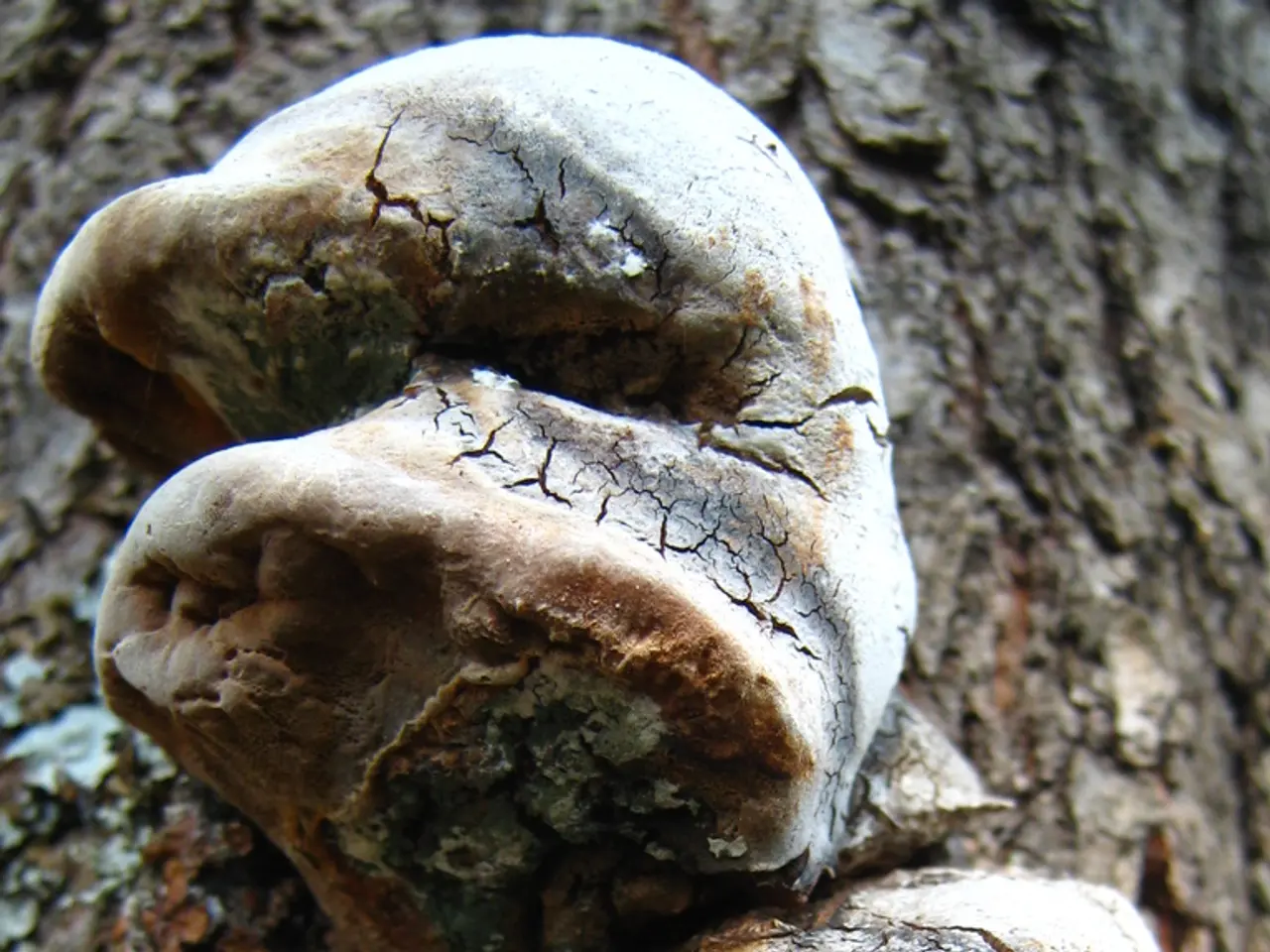Destructive Rust Affecting Blackberry Bushes
In the world of black and purple raspberries, as well as most varieties of erect and trailing blackberries, a fungus disease known as orange rust poses a significant threat. Named for the bright orange, rusty appearance that develops on infected leaves, this disease can cause significant yield loss if left unchecked.
First identified in the spring, orange rust thrives in cool and persistently wet conditions, often spreading from infected canes or spores blown by the wind. To prevent the onset of the disease, it's crucial to carefully scout for and dig out infected plants, including roots, before pustules form.
The disease progresses as the season advances, with symptoms becoming visible shortly after new growth appears in the spring. Infected leaves exhibit blister-like pustules, which turn powdery and bright orange as the disease progresses.
While orange rust does not infect red raspberries, it can be devastating for black and purple raspberries and certain blackberry varieties. However, there are effective management strategies to combat this disease.
The best method to control orange rust is to plant resistant varieties. Red raspberries are all resistant, while all purple and black raspberries are susceptible. The level of resistance in blackberries appears to be dependent on the region. Purchasing planting material from a reputable source can also help prevent orange rust.
In addition to planting resistant varieties, sanitation practices such as cleaning pruning tools and avoiding movement of infected plant material between fields play a crucial role in managing the disease. Regular monitoring throughout the growing season to detect early symptoms for timely management is also essential.
For commercial plantings, chemical control can complement plant removal. In spring, apply fungicides before blisters appear to protect new plants. In the fall, if rust was observed in the spring, apply fungicides towards the base of floricane and primocane to protect developing buds.
Consult the Midwest Fruit Pest Management Guide (Bulletin 506) for current fungicide recommendations for commercial growers. For backyard growers, refer to Controlling Diseases and Insects in Home Fruit Plantings (Bulletin 780) for appropriate fungicide recommendations.
Avoid planting near woodlots or river banks to minimize the risk of orange rust infection. Maintaining good air circulation in the planting by pruning out old fruited canes, thinning out healthy canes, and keeping the planting free of weeds further reduces the risk of infection.
These strategies align with integrated pest management principles recommended for rust diseases in brambles. Pruning and thinning to improve air circulation also help reduce disease incidence by creating less favorable conditions for fungal spread.
While the precise targeted recommendations for orange rust in brambles in the northeastern United States are not explicitly detailed in the available resources, these general practices are consistent with standard approaches to managing rust diseases in raspberries and blackberries in temperate regions.
For definitive control protocols, consulting local extension services or specific regional fact sheets on orange rust in brambles is advisable. It's important to note that while the disease does not normally kill the plant, infected plants will bear little or no fruit in following years.
[1] Virginia Tech's entomology resource: https://entomology.extension.vt.edu/content/raspberry-cane-borer [3] Virginia Tech's entomology resource: https://entomology.extension.vt.edu/content/black-raspberry-leaf-spot
Incorporating the principles of integrated pest management, the practice of pruning and thinning to improve air circulation in brambles can help reduce the risk of both raspberry cane borer and black raspberry leaf spot, in addition to orange rust, due to the creation of less favorable conditions for fungal spread. Adopting a holistic health-and-wellness approach to raspberry cultivation, this might also include dietary considerations for the soil, such as proper nutrition for optimal plant growth and yield. Furthermore, expanding this approach to fitness-and-exercise for the plants could involve regular sanitation practices like cleaning pruning tools and avoiding the movement of infected plant material between fields, helping to manage and mitigate the spread of devastating diseases like orange rust.




